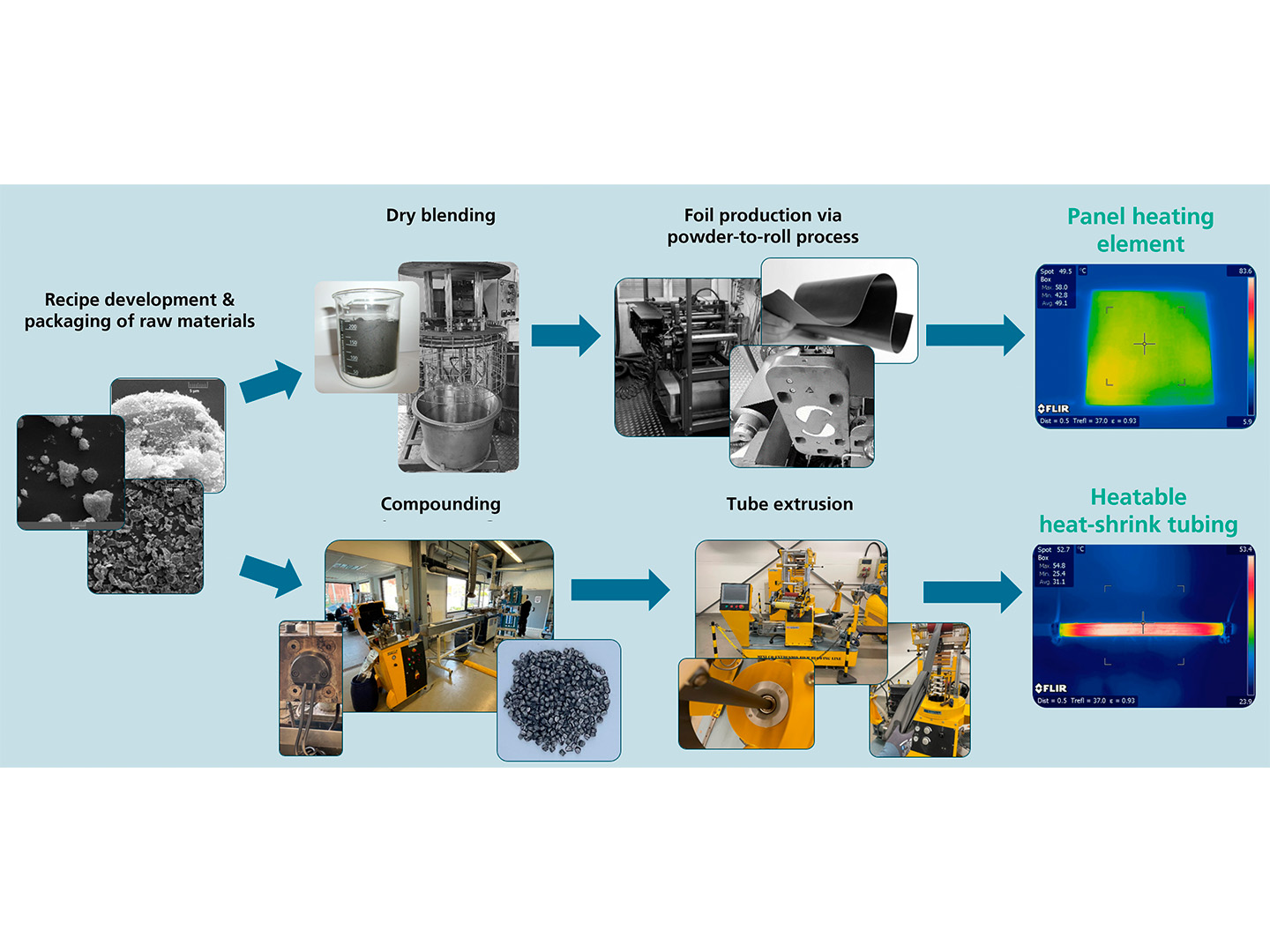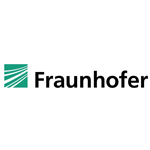Project goals
The "Power2Heat Compounds" project leverages a core expertise of Fraunhofer UMSICHT – the development of conductive polymer foils using the patented powder-to-roll manufacturing process – for heating applications. To date, the materials have primarily been used in the manufacture of electrodes for electrochemical reactors.
Furthermore, a novel type of heat-shrink-tubing, employing a patent-pending process, is being further developed. This polymer-based, electrically conductive tubing, which can be shrunk using hot air, demonstrates the ability to heat pipes or other three-dimensional objects upon electrical connection.
The project aims to develop energy- and resource-efficient, cost-effective and sustainable heating components tailored for specific applications. A pioneering aspect involves the continuous production of two-dimensional, plastic-based, large-area electrical surface heating elements through a powder-to-roll process as well as extrudable, electrically heatable heat-shrink-tubing. The scientific challenge lies in effectively blending polymers with fillers to optimize electromechanical and thermal properties in the final product. The application-specific selection of the base polymer, as well as appropriate fillers and their proportions, is paramount to fine-tuning specific resistance and thus heating performance. Potential applications span surface heating elements, wearables, pipe trace heating, and dedicated industrial applications.
 Fraunhofer Institute for Environmental, Safety and Energy Technology UMSICHT
Fraunhofer Institute for Environmental, Safety and Energy Technology UMSICHT
